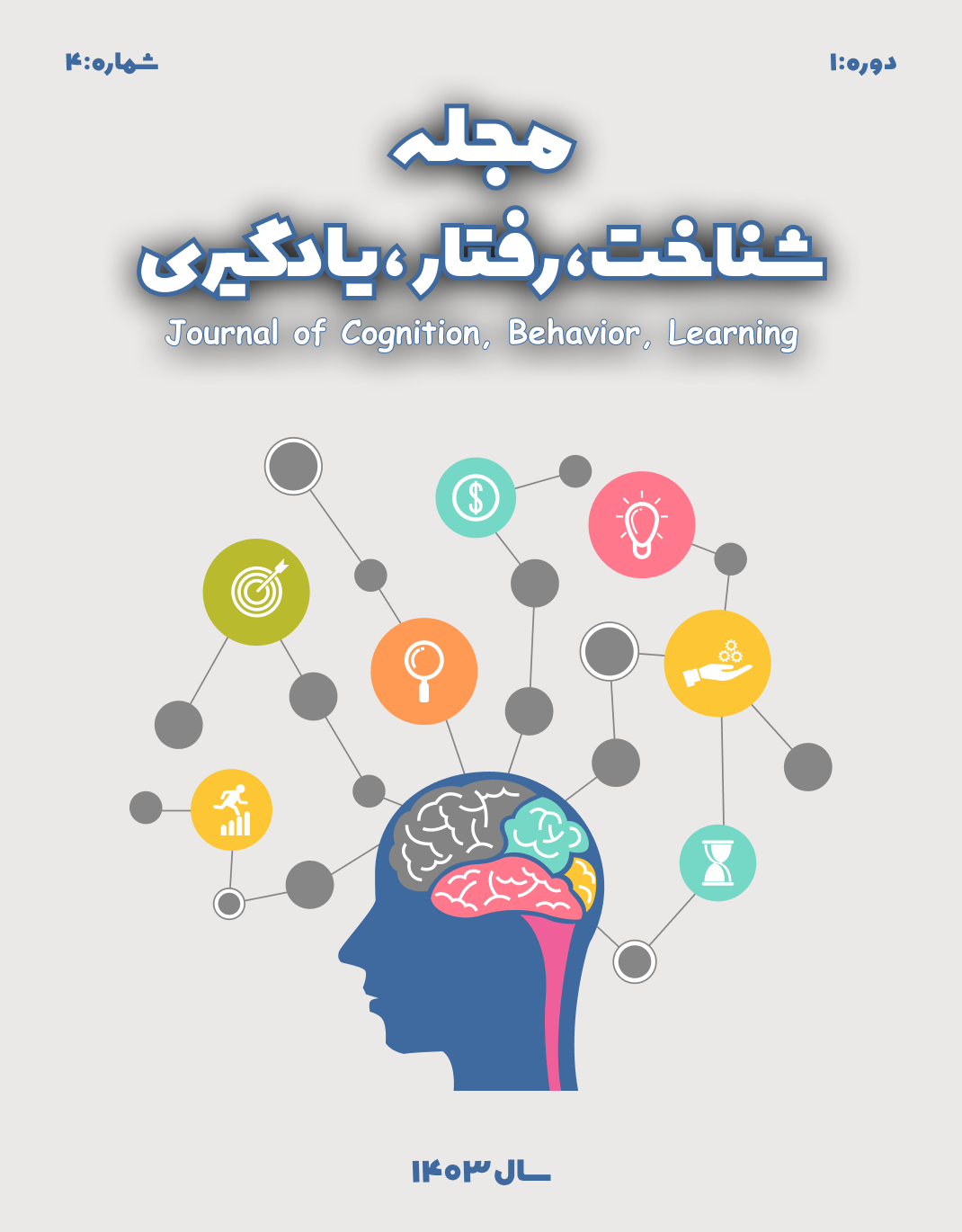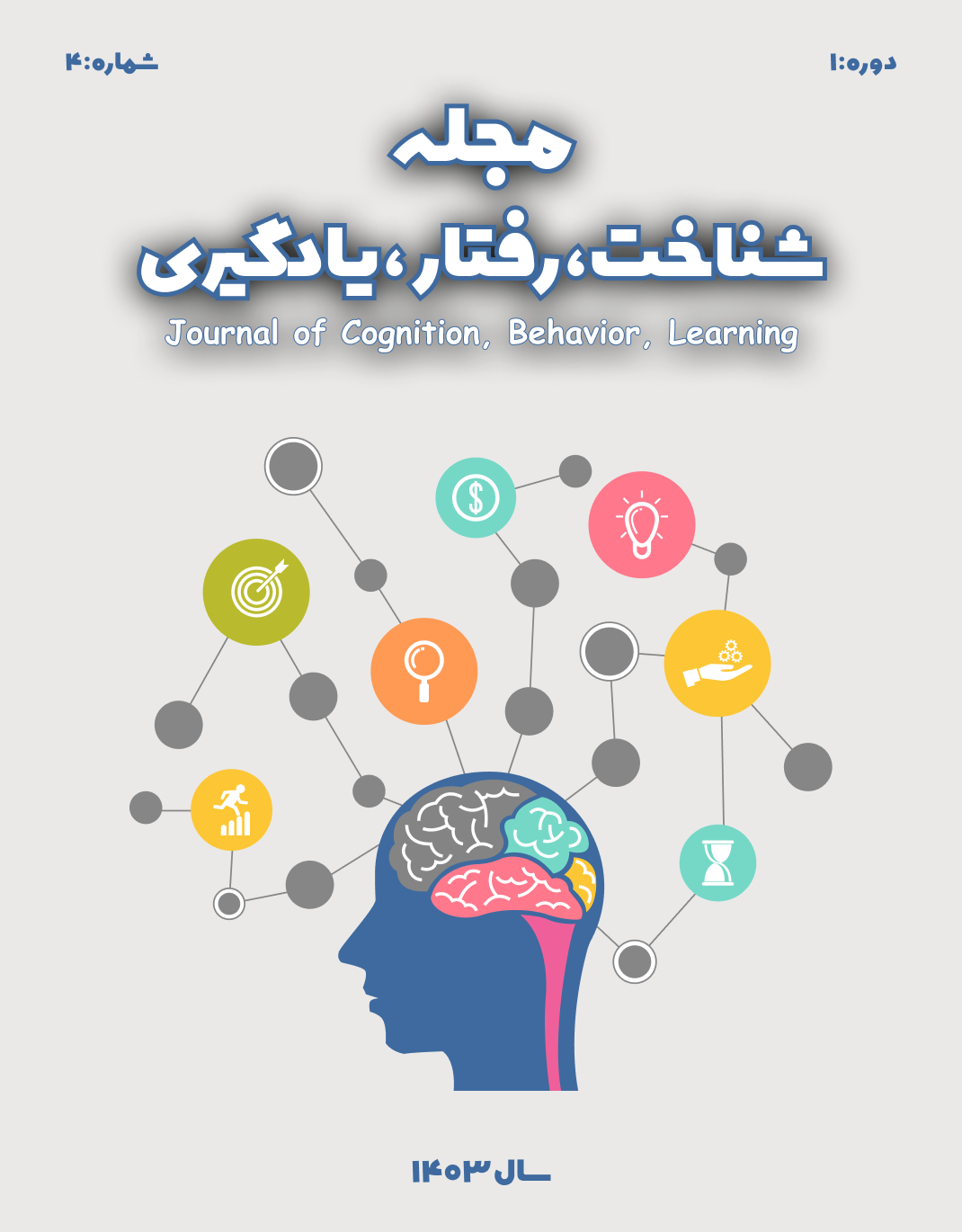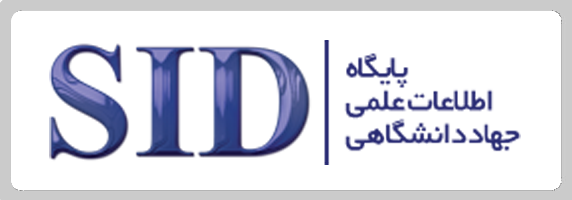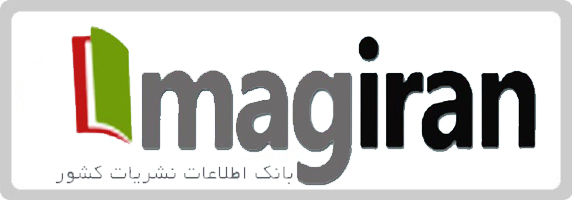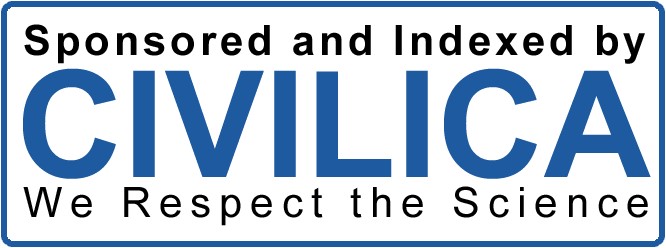نگرش معلمان و دانش آموزان ترک زبان شاهسوند به آموزش رسمی و غیررسمی
کلمات کلیدی:
آموزش رسمی, آموزش غیررسمی, اقلیت , دانش آموزان, معلمانچکیده
آموزش فرآیندی پیچیده است که شامل تجربیات یادگیری رسمی و غیررسمی میشود و نقش مهمی در شکلگیری هویت فردی و ارزشهای انسانی ایفا میکند. روش پدیدارشناسی برای توصیف و شناسایی ماهیت پدیدهها، همانگونه که توسط افراد درک میشوند، بهکار میرود. در این روش، محقق دادهها را از افرادی که تجربه پدیده مورد نظر را دارند، جمعآوری کرده و جوهره این تجربه را توصیف میکند. هدف این پژوهش بررسی نگرش معلمان و دانشآموزان اقلیت ترکزبان (شاهسوند) نسبت به آموزش رسمی و غیررسمی بود. سؤالات اصلی شامل نگرش اقلیتها به آموزش رسمی، تفاوتهای جنسیتی در این نگرش، و مزایا و معایب آموزش رسمی و غیررسمی بود. برای این منظور، ۳۸ شرکتکننده شامل ۱۵ معلم (۳۰ تا ۵۰ سال) و ۲۳ دانشآموز (۱۷ تا ۱۸ سال) از طریق نمونهگیری هدفمند انتخاب شدند. دادهها از طریق مصاحبههای نیمهساختاریافته جمعآوری و با روش ون منن تحلیل شدند. یافتهها در ۱۱ مقوله اصلی خلاصه شد: تبعیض در آموزش رسمی، کسب مهارت، تفکر نقاد، دیده شدن اقلیتها، انتقال یا تغییر مشاغل خانوادگی، تشویق والدین به تحصیل، بیتوجهی به خلاقیت، هزینههای مدرسه، تشکیل خانواده، خطر طرد شدن، و فراموشی فرهنگ اقلیت. این مقولهها در چهار طبقه مفهومی شامل جهتگیریها، رفتارها، تجربهها، و عملکردها دستهبندی شدند که معنای آموزش را برای این گروه بازتاب میدهند.
دانلودها
مراجع
Bagherinia, H., & Shokouri Moghani, S. (2016). Causes of Indoctrination in Formal and Informal Education Systems and Solutions Compatible with Islamic Culture. Journal of Educational Sciences from an Islamic Perspective, 7. https://ensani.ir/fa/article/383259/
Ciaian, P., & Kancs, D. (2019). Marginalisation of Roma: root causes and possible policy actions. Eur. Rev., 27, 115-130. https://doi.org/10.1017/S106279871800056X
Czaderny, K. (2022). Segregation, education, and inclusion of European Roma: a demographic analysis. Migrat. Lett., 19, 897-909. https://doi.org/10.33182/ml.v19i6.1555
Darzadeh, F. (2023). Investigating the Effects of Teacher Discrimination on Students’ Mental Health. 2nd National Conference on Evolutionary and Educational Psychology. https://civilica.com/doc/1945340/
Ebrahimi Khebir, N., & Vafadar, M. (2022). Critique and Review of Ivan Illich’s Deschooling Society Perspective. 5th International Conference on Psychology, Educational Sciences, and Social Studies. https://civilica.com/doc/1647778/
Falck, R. (2021). Discrimination against Roma: evidence from two survey experiments in Norway. Migrat. Stud., 9, 360-382. https://doi.org/10.1093/migration/mnaa026
Fathi Vajargah, K. (2022). Curriculum towards New Identities. Ayij.
Friberg, J. H. (2020). Poverty, networks, resistance: the economic sociology of Roma migration for begging. Migrat. Stud., 8, 228-249. https://doi.org/10.1093/migration/mny038
Huta, V. (2016). Eudaimonic and Hedonic Orientations: Theoretical Considerations and Research Findings. In J. Vittersø (Ed.), Handbook of Eudaimonic Well-Being. International Handbooks of Quality-of-Life. https://doi.org/10.1007/978-3-319-42445-3_15
Kapur, R. (2019). Understanding the meaning and significance of formal education. https://www.researchgate.net/publication/335826519_Understanding_the_Meaning_and_Significance_of_Formal_Education
Klaus, S., & Siraj, I. (2020). Improving Roma participation in European earlychildhood education systems through cultural brokering. Lond. Rev. Educ., 18, 50-64. https://doi.org/10.18546/LRE.18.1.04
Maleki, H. (2022). Curriculum Planning (A Practical Guide). Monadi Tarbiat.
Merhaut, M., Fulkova, M., & Rudorfer, L. F. (2022). Social Services Management in the Context of ethnic Roma issues in the Czech Republic with a focus on education for Roma children. Soc. Sci., 11, 477. https://doi.org/10.3390/socsci11100477
Nasr Abadi, H. A. (2018). Critique of the Static Approach in Contemporary Iranian Education and Presentation of a Dynamic Model of Islamic Education. 2nd National Conference on Applied Research in Humanities and Psychology. https://civilica.com/doc/881884/
Rogers, C. (2021). Inclusion or exclusion: UK education policy and Roma pupils. In M. M. Mendes, O. Magano, & S. Toma (Eds.), Social and economic vulnerability of Roma people. Springer. https://doi.org/10.1007/978-3-030-52588-0_1
Rotaru, I. C. (2019). The school dropout of Roma children. Between anti-gypsism andthe socio - economic dysfunction of Romanian educational system. International Conference “Supervision in Psycotherapy”. https://www.researchgate.net/publication/335293496_The_school_dropout_of_Roma_children_Between_anti-gypsism_and_the_socio_-economic_dysfunction_of_Romanian_educational_system
Sakamoto, J., Fuller, S., Amaro, D., Wang, Y., Soobrayan, P., & Mizunoya, S. (2022). Education pathways in Roma settlements. United Nations Children’s fund (UNICEF). https://data.unicef.org/wp-content/uploads/2022/01/UNICEF-2022-Education-pathways-in-Roma-settlements.pdf
Spielhaus, R., Szakács Behling, S., Ailincai, A., Hopson, V., & Marko Pecak, M. (2020). The representation of Roma in European curricula and textbooks. Analytical Report. https://repository.gei.de/handle/11428/306
Stark, O., & Berlinschi, R. (2021). Community influence as an explanatory factor why Roma children get little schooling. Public Choice, 189, 93-114. https://doi.org/10.1007/s11127-020-00860-z
Stenroos, M., & Helakorpi, J. (2021). The multiple stories in Finnish Roma schooling. In M. M. Mendes, O. Magano, & S. Toma (Eds.), Social and economic vulnerability of Roma people. Springer. https://doi.org/10.1007/978-3-030-52588-0_7
Tervonen, M., & Enache, A. (2017). Coping with everyday bordering: Roma migrants and gatekeepers in Helsinki. Ethn. Racial Stud., 40, 1114-1131. https://doi.org/10.1080/01419870.2017.1267378
Trbojević, A., Jeremić, B., Milenović, H. Ž., & Lazić, B. (2023). Representation of Roma content in curricula and textbooks at the initial education level in Serbia. Int. J. Cogn. Res. Sci., 11, 115-127. https://doi.org/10.23947/2334-8496-2023-11-1-115-127
Van den Bogaert, S. (2018). Chapter 2 education as a key to inclusion and as an indispensable means of realizing other human rights. In Segregation of Roma children in education. Brill | Nijhoff. https://doi.org/10.1163/9789004354210_004
VanManen, M., Higgins, I., & Riet, P. (2016). A conversation with Max Van Manen on phenomenology in its original sense. https://doi.org/10.1111/nhs.12274
Wagner, A., Stan, L., & Bonker, F. (2022). Romania Report. Sustainable Governance Indicators 2022. https://www.sgi-network.org/docs/2022/country/SGI2022_Romania.pdf
Zachos, D. T., & Panagiotidou, A. (2019). Roma Parents’ perceptions on education. J. Adv. Educ. Res., 4, 13-23. https://doi.org/10.22606/jaer.2019.41002
دانلود
چاپ شده
ارسال
بازنگری
پذیرش
شماره
نوع مقاله
مجوز
حق نشر 2024 مجله شناخت، رفتار، یادگیری

این پروژه تحت مجوز بین المللی Creative Commons Attribution-NonCommercial 4.0 می باشد.
